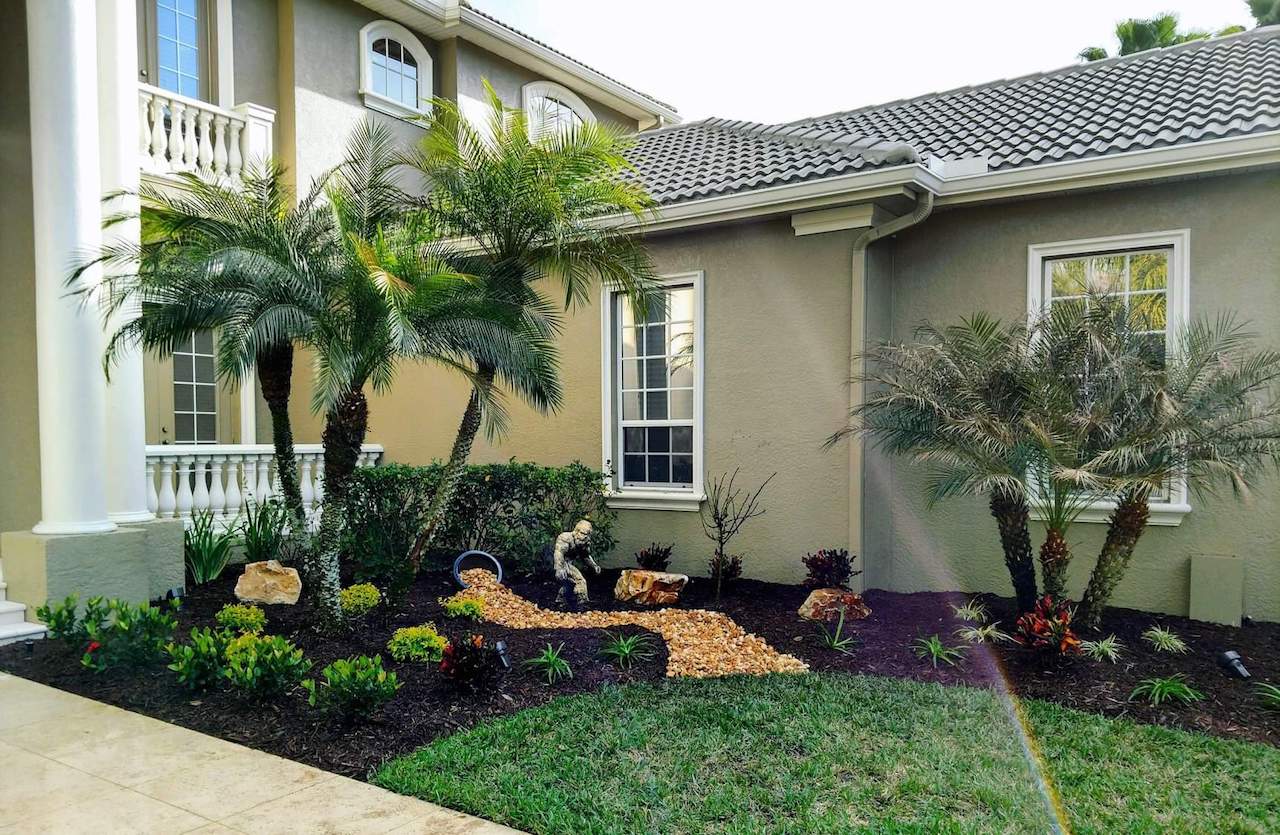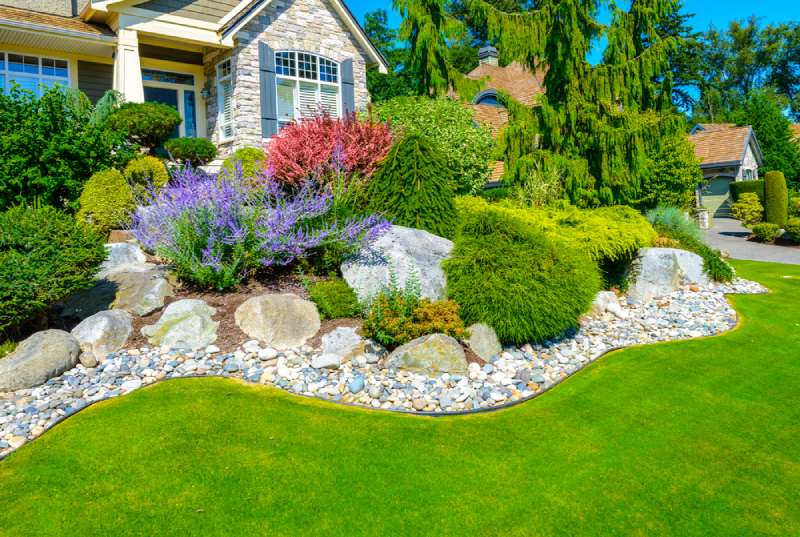A Comprehensive Guide to Designing and Implementing Effective Landscape Design Solutions
The art and science of landscaping prolong beyond mere aesthetics; they include a thoughtful combination of layout concepts, ecological stewardship, and practical execution. What techniques can one use to make sure these landscapes not only grow but also thrive in harmony with their environments?

Recognizing Landscape Style Principles
One could question what fundamental elements contribute to efficient landscape style. At its core, successful landscape design rests on several essential concepts that lead the setup and selection of aspects within a room. These principles consist of unity, rhythm, balance, and proportion, each serving to create an unified outdoor environment.
Unity describes the natural connection amongst different parts, making certain that they collaborate cosmetically and functionally. Balance can be accomplished with balanced or asymmetrical arrangements, permitting the landscape to feel stable and inviting. Percentage involves understanding the range of elements in relationship to each other and the surrounding environment, promoting aesthetic harmony and comfort.

Examining Your Outdoor Space
Prior to implementing the principles of landscape style, a comprehensive assessment of your exterior area is vital. This preliminary evaluation aids specify the range of your landscaping task and guarantees that your layout lines up with the one-of-a-kind characteristics of your building. Begin by assessing the dimensions of your room, taking exact dimensions to comprehend the available area for different elements such as patio areas, yards, and pathways.
Following, observe the existing features of your landscape, consisting of topography, dirt top quality, and drain patterns. These aspects considerably affect plant option and placement. In addition, analyze the sunlight exposure throughout various locations throughout the day, as this will impact the types of plants that flourish in your garden.
Take into consideration the microclimates created by structures, trees, and various other challenges, as they can affect temperature level and moisture levels. Take note of any type of existing plants or hardscape components that you want to maintain or remove. This detailed evaluation prepares for a efficient and well-informed landscape design remedy, ensuring that your layout is not only visually pleasing but lasting and additionally practical for several years to find.
Sustainable Landscape Design Strategies
Integrating lasting landscaping strategies is important for producing an environmentally liable outside room. These techniques not only advertise ecological equilibrium but likewise enhance the aesthetic and useful worth of a landscape. One fundamental strategy is the utilization of native plants, which call for less water and maintenance while supporting local wildlife. Executing efficient watering systems, such as drip irrigation, minimizes water waste and makes sure that plants obtain sufficient wetness.

Another reliable technique is the critical positioning of bushes and trees to supply all-natural windbreaks and shade, thus lowering power expenses (Palm Desert Landscaping). Rain gardens can be incorporated into the landscape design to manage stormwater drainage properly, filtering system pollutants prior to they get in waterways
Picking the Right Plants
Picking the right plants for your landscape is critical to achieving both aesthetic appeal and eco-friendly harmony. The procedure begins with an understanding of your neighborhood climate, dirt problems, and the details microenvironments within your landscape. Analyzing elements such as sunshine exposure, wetness levels, and existing vegetations will help you select plants that prosper in your special setting.
Think about integrating indigenous plants, as they are well-adapted to local problems, call for less maintenance, and support local wildlife. Furthermore, choosing a diverse selection of varieties can improve biodiversity while minimizing the risk of disease and bug episodes. It is necessary to assess the growth routines, growing durations, and seasonal colors of potential Learn More Here plants to develop a natural and vibrant landscape.
Furthermore, think regarding the planned use of the area; for circumstances, if the area will certainly experience high foot traffic, decide for resilient ground covers. By attentively choosing plants that align with both your aesthetic objectives and ecological needs, you can produce a lasting landscape that not only improves your building yet likewise adds favorably this post to the surrounding ecosystem.

Implementation and Maintenance Approaches
When the best plants have been picked for your landscape, the focus moves to effective implementation and recurring upkeep approaches. Successful installment starts with correct site preparation, which includes dirt testing to establish nutrient levels and pH, followed by modifying the soil as needed. Thoroughly set up plants according to their growth habits and light requirements, making sure appropriate spacing to promote healthy growth.
Irrigation is an essential aspect of execution. Develop a watering timetable that considers the certain requirements of each plant species, readjusting for seasonal modifications. Utilizing drip irrigation systems can boost water effectiveness and reduce drainage.
Upkeep methods need to be executed to ensure the longevity and vigor of your landscape. Routine jobs consist of weeding, mulching, and trimming to manage growth and avoid illness. Fertilizing needs to be performed based on dirt tests, offering the necessary nutrients without over-fertilizing.
Monitoring for parasites and conditions is vital; early discovery can avoid substantial damages. Finally, seasonal adjustments to upkeep regimens, such as winterizing perennials and preparing for springtime growth, will certainly make certain that your landscape stays healthy and balanced and visually appealing year-round.
Conclusion
Successful execution and continuous upkeep additionally make sure the long life and vitality of landscapes. By incorporating these elements, landscapes can be changed into gorgeous, practical atmospheres that promote biodiversity and add positively to neighborhood wellness.
One may question what foundational Web Site elements contribute to reliable landscape layout. At its core, effective landscape design pivots on several key concepts that lead the setup and option of elements within a space.Choosing the right plants for your landscape is critical to achieving both visual charm and environmental harmony. It is necessary to evaluate the growth routines, blooming periods, and seasonal shades of possible plants to develop a dynamic and cohesive landscape.
Once the best plants have been chosen for your landscape, the emphasis changes to effective application and recurring upkeep methods.